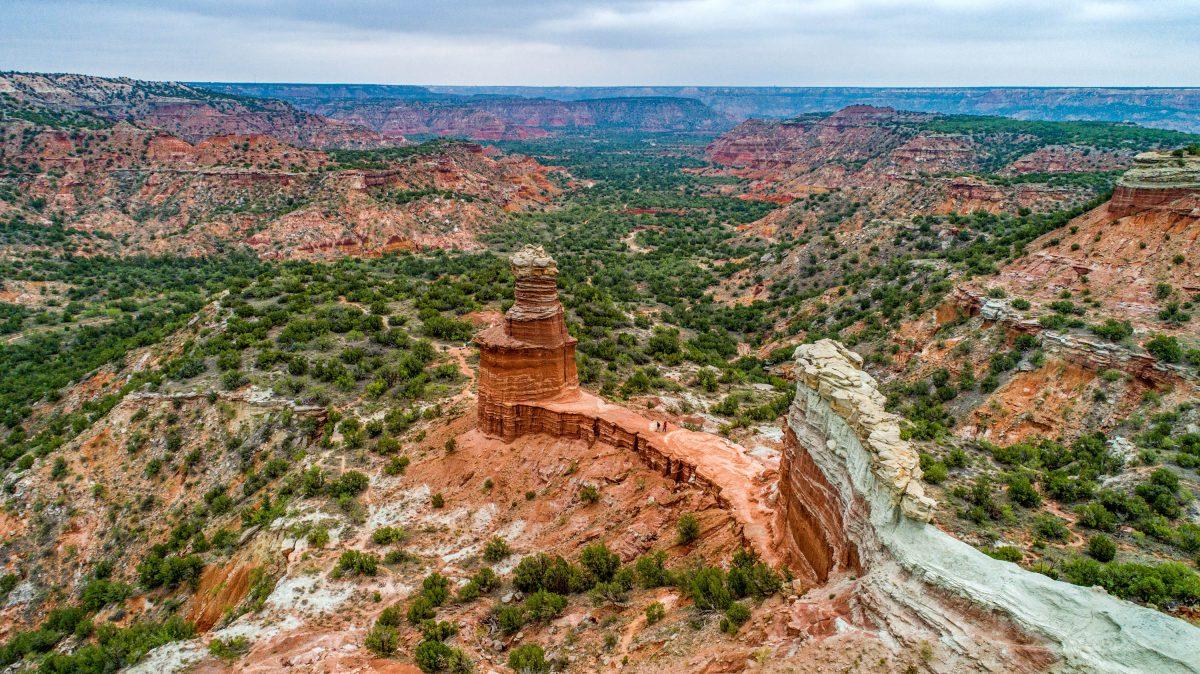Vast in geography but sparse in population, West Texas and the Panhandle Plains face climate concerns catalyzed by a shifting cultural landscape.
Texas land is about 95 percent privately owned, according to the nonprofit Texas Land Conservancy. Among Western states, the average is 47 percent, which means Texas land conservation and stewardship efforts are largely in the hands of private citizens. As populations increase, greater demand for resources follows.
It begs the question: Who will manage water resources, invasive species and emissions by cattle operations, all of which pose threats to environmental conservation?
Access to limited water and water resource management are the top threats facing the West Texas region and much of the Western United States, said Jim Miculka, Texas A&M professor and National Park Service coordinator. In Texas, water ownership is largely dictated by a judge-made law establishing “absolute ownership” over a property’s groundwater reserves. Often referred to as the “law of the biggest pump,” the rule pits individual owners against downstream needs.
“That is — to discuss whatever water is there — who actually owns that, who claims that and who has the right to say that if it runs across my land, I should be able to own it and distribute it and use up all I want?” Miculka explained. “Versus knowing further downstream, animals need to drink that water or somebody else is going to use it instead.”
Scientists and conservation experts have said further research is needed before more development takes place.
“I think water availability is really critical,” said Victoria Todd, executive director of Wildcat Bluff Nature Center. “You can’t have human habitation if you don’t have enough water.”
Todd lives in Amarillo where a majority of the water is sourced from the Ogallala Aquifer. Some estimates show the aquifer will run dry by 2050 if current usage continues unchanged. Todd’s husband, retired USDA soil scientist Rick Todd, Ph.D., said reliance on the Ogallala makes the region even more at the mercy of the water management practices of others.
“Some of Amarillo’s domestic water comes from the Canadian River,” Rick said. “And that could be impacted by the snowpack in northern New Mexico and in southern Colorado.”
That makes snowfall in other states a risk factor for part of Amarillo’s water source.
Cattle ranchers and mining and fracking operations compete for water in addition to what is needed to sustain a population. These industries also pose other challenges to the land and environment.
“There are no regulations right now on greenhouse gas emissions directly from cattle in the form of methane, or indirectly, say in the form of nitrous oxide,” Rick said. “But that doesn’t mean that in the future there won’t be, you know, as the implication of global warming becomes more apparent.”
The Amarillo couple agreed that any government regulation is more likely to be federal than state, and said the argument for regulation requires both more research and more local public education about the issues at hand.
“These are people, you have to understand, that have farmed the land and lived on the land and cared deeply about the land and have for generations,” Victoria said. “And so thinking about it changing, and thinking about having to do something else, is potentially really scary.
“So, it’s not people that don’t care about the land,” Victoria explained. “They really, really do. But it is also their livelihood, and they care a lot about their animals, and they don’t want to see things happen.”
Ranchers also are at odds with public land management practices that encourage re-emergence of native plants and animals.
“So there’s the clash of the management of national parks versus the next person across the fence that raises cows or sheep,” Miculka explained. “And these mountain lions come across the earth and kill them.
“These areas like Big Bend or Guadalupe Mountains are not islands unto themselves, you know,” Miculka added. “They are just like the weather, you know, the rain isn’t gonna stop up a fence line.”
Recent movements of black bears and mountain lions in the region may pose threats to ranchers, but they also present advantages to the ecosystem, Miculka said. The key, he said, is educating these ranchers about the benefits.
“I think the rancher truly believes that they’re good caretakers of the land,” Miculka said, even if some of their environmental philosophy isn’t good. “They don’t want to ruin their place because they can’t make a living,” he added.
The current argument includes whether real economic incentive is to keep things the same or to make changes. Both Victoria and Rick Todd point out that even with more research demonstrating economic and environmental benefits of change, only lawmakers can regulate practices that pose environmental threats.
“It also boils down to if the research being done is listened to — and considered — in policy suggestions,” Victoria said. “So if the powers that be can make those recommendations and don’t do it, then all the research in the world isn’t good enough.”
This story is a collaboration between The Battalion and upperclassmen in Texas A&M’s journalism degree. To see the online copy of the Climate Change extra print edition, click here.




















